
by logisticsplus | Nov 19, 2015 | News
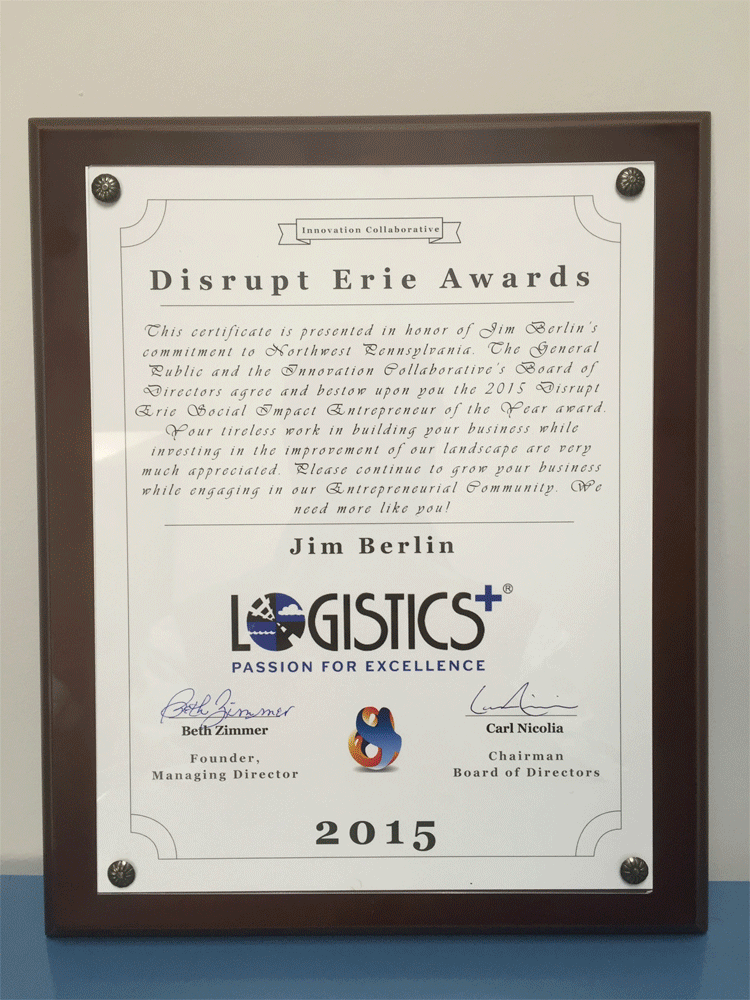 As we announced last month, Jim Berlin/Logistics Plus and LP Linguistic Solutions were both nominated for Disrupt Erie Awards by Innovation Collaborative. Winners were announced Wednesday night at Presque Isle Downs & Casino. As reported by Erie Times-News earlier this morning, the following winners were named:
As we announced last month, Jim Berlin/Logistics Plus and LP Linguistic Solutions were both nominated for Disrupt Erie Awards by Innovation Collaborative. Winners were announced Wednesday night at Presque Isle Downs & Casino. As reported by Erie Times-News earlier this morning, the following winners were named:
- Creative Entrepreneur of the Year: Margo Wolfe and Mark Tanenbaum, Performing Artists’ Collective Alliance.
- Erie’s Hero Award: O.G. Crawford and H.O. Hirt, founders of Erie Insurance.
- Social Impact Entrepreneur of the Year: Jim Berlin, founder of Logistics Plus.
- Startup Champion of the Year: Linda Stevenson, chairwoman of the Athena PowerLink program.
- Startup of the Year: Erie Ale Works.
- People’s Choice Award: Iron Empire Clothing.
Companies nominated for awards are driving change within the community and within their respective industries, and are making a lasting economic impact and creating lasting opportunities. The Social Impact Entrepreneur of the Year Award was based on a founder’s work that has had the most positive impact on the community’s well-being over the past year. All winners were chosen (50%) based on public input and (50%) based on the specific criteria listed on the nomination forms. Final judging was performed by Mr. Thom Ruhe and the Innovation Collaborative Board of Directors.
Congratulations to all of the winners in Innovation Collaborative’s first-ever Disrupt Erie Awards!


by logisticsplus | Nov 16, 2015 | News
 According to a U.S. Department of Commerce report, over 185,000 U.S. companies imported foreign goods in 2012, an increase of more than 10 percent from 2009. The majority of these businesses were small or medium-sized companies that may, in fact, lack the necessary resources to be a successful importer. If your business imports – or is planning to import – foreign goods, here are ten (10) keys to successfully navigating the complex waters of international trade.
According to a U.S. Department of Commerce report, over 185,000 U.S. companies imported foreign goods in 2012, an increase of more than 10 percent from 2009. The majority of these businesses were small or medium-sized companies that may, in fact, lack the necessary resources to be a successful importer. If your business imports – or is planning to import – foreign goods, here are ten (10) keys to successfully navigating the complex waters of international trade.
- Get a Formal Contract
Before purchasing and importing foreign products, make sure you issue a formal written document that includes all of the significant issues to the buyer and seller, such as product acceptance, warranties and dispute resolution procedures. Otherwise, you will expose your business to significant risks which may be very difficult to control
- Familiarize Yourself with U.S Customs Policies & Procedures
It is essential that you fully understand whether or not importing your product will require a license or permit. Although the U.S Customs and Border Protection (CBP) does not generally require importers to have a license or permit, there are other agencies that may require one; examples include the FDA, USDA and the ATF. Furthermore, there are certain goods that may be subject to specific requirements with regards to their testing, marketing, certification, labeling, packaging and documentation. To get more acquainted with these requirements, you can visit www.cbp.gov (or see key #10 below).
- Make Sure You Understand Incoterms
This may be a no-brainer, but it is always important to understand the deal in which you are getting yourself. Suppliers are obliged to submit a term of sale alongside each quotation submission. It is your responsibility to fully understand the costs, rights and obligations included in these Incoterms. This will also help you estimate your costs more accurately (if you’re confused about Incoterms, see key #10 below).
- Classify Your Products Properly
The harmonized tariff schedule classification (HTS) of a product is what determines the rate of duty applied to it. Therefore, it is very important that you assign the correct classification to your products. This will not only reduce your duties, but will also ensure you don’t face additional obstacles when your goods enter the United States. To learn more about this process, talk to someone familiar with HTS classifications (or see key #10 below).
- Consider Preferential Duty Programs
There are many preferential duty programs out there that can help you avoid certain duties and reduce your transaction costs. The Generalized System of Preferences, in addition to free trade agreements that the U.S. has in force with 20 countries, can give you a competitive advantage in the global market place (or see key #10 below).
- Research Import Quota Requirements
These refer to quotas that limit the amount of imported commodities into the United States within a specified amount of time. Some quotas allow goods to continue entering the United States after the limit has been reached but at a higher rate of duty, these are called tariff rate quotas (If you’re not sure if your product has an import quota, then see key #10 below).
- Find a Reliable and Legitimate Foreign Seller
Before making any final transactions, you need to ensure that the seller which you are dealing with is reliable. This is when you should conduct extensive research in terms of their reputation, financial status, and overall history. Doing business with unfamiliar suppliers can be risky, so you have to always be prepared.
- Pick the Right Insurance Coverage
There are many things that could happen to your goods on their way to their final destination – from severe weather conditions to rough handling by carriers, you can never be over-prepared. It is, therefore, very crucial that you accurately determine the type, amount, and extent of insurance coverage that you may need. You should also know who will be responsible for insuring your goods when they are not in your possession. Always make sure you have proof of insurance from your sellers, and never only take their word for it.
- Keep Records of Everything
U.S. CBP laws require importers to keep records of all documents relating to imports for a period of five years. These records may be inspected at any time in order to check your compliance status to all U.S. CBP laws (if you’re not sure what documents to keep, see key #10 below).
- Hire an Experienced Customs Broker!
If you’re new to importing – or even if you’re not – you may want to consider hiring a freight forwarder that is also a professional customs broker, like Logistics Plus (LP), to help you with all of your importing procedures. The LP Customs Broker Solutions team can help simplify the process, and ensure you abide by all rules and regulations, thus minimizing any potential future problems. If you have any questions specific to import customs rules or duties, feel free to contact Gretchen Blough, our Customs Brokerage Manager, at gretchen.blough@logisticsplus.com.
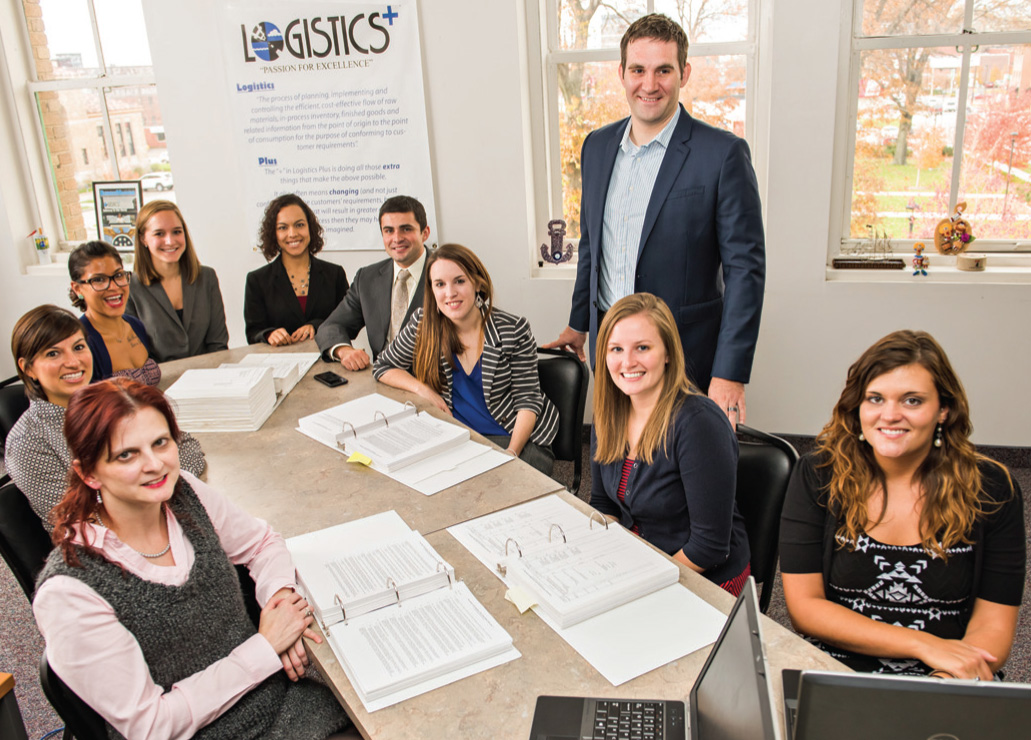
If you’re ready to import a shipment or need help with an international air or international ocean freight quote, please send an email to imports@logisticsplus.com (or click the button below).

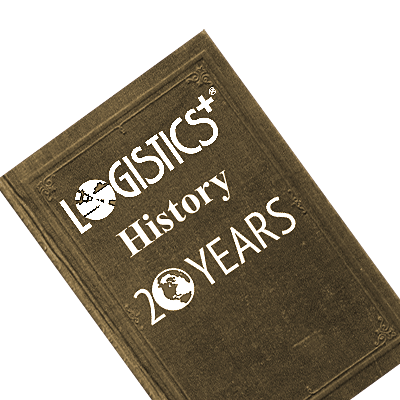
by logisticsplus | Nov 6, 2015 | News
 As we celebrate our 20th year of business, we continue our walk down memory lane by sharing the following Erie Times-News newspaper clipping from December 3, 2003. This article was a follow-up to the formal announcement on October 31 that same year. It details the formal ceremony – held exactly 76 years after the building was officially opened – in which Logistics Plus founder, Jim Berlin, discusses his $1 million renovation plans for Erie’s Union Station (you can click the news clipping below to view a slightly larger image).
As we celebrate our 20th year of business, we continue our walk down memory lane by sharing the following Erie Times-News newspaper clipping from December 3, 2003. This article was a follow-up to the formal announcement on October 31 that same year. It details the formal ceremony – held exactly 76 years after the building was officially opened – in which Logistics Plus founder, Jim Berlin, discusses his $1 million renovation plans for Erie’s Union Station (you can click the news clipping below to view a slightly larger image).
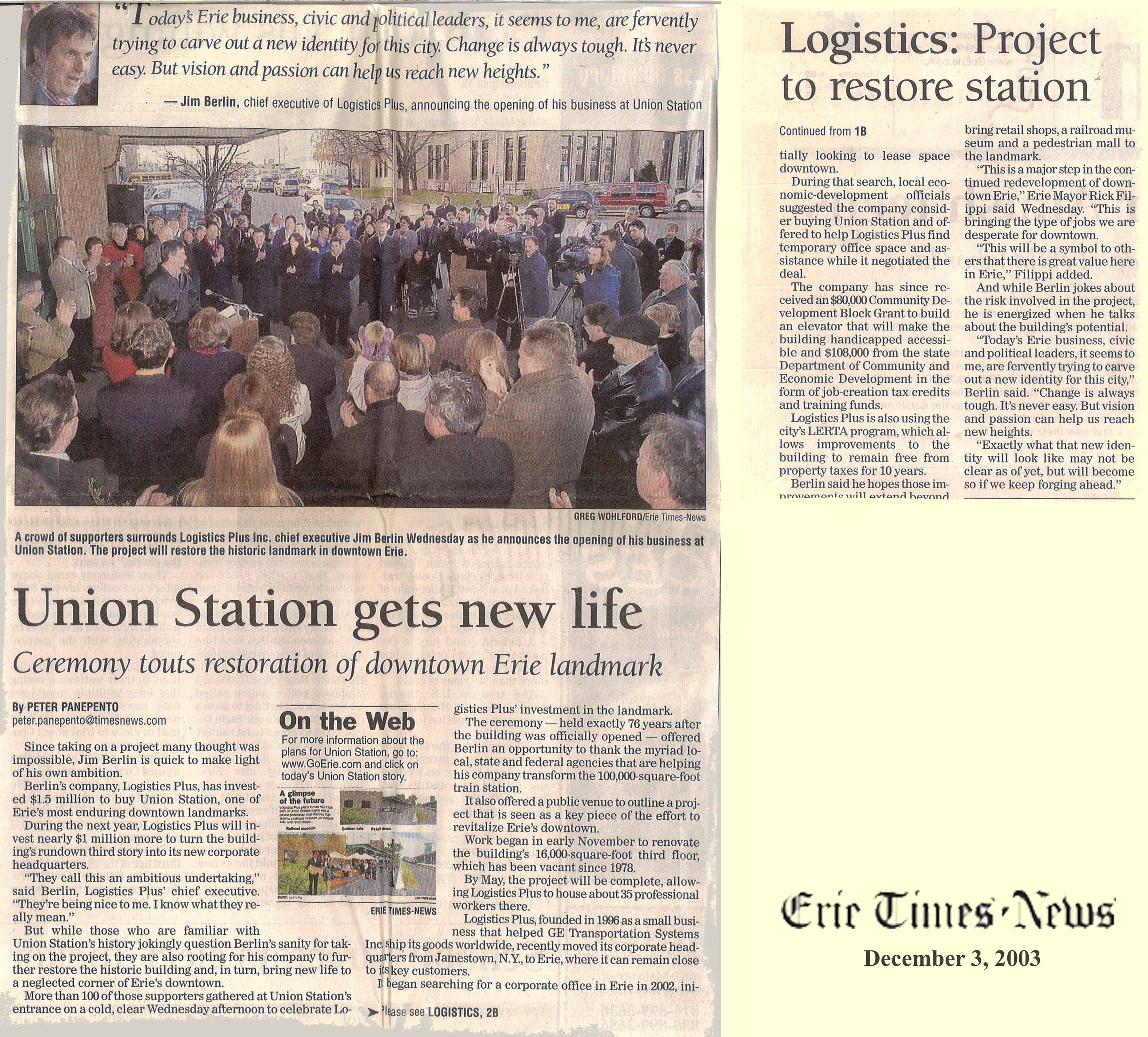
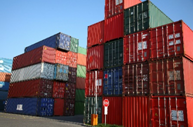
by logisticsplus | Nov 5, 2015 | News
 The International Maritime Organization (IMO.org) has recently approved changes to the Safety of Life at Sea (SOLAS) Convention requiring the verification of container weights. Here are five things shippers should know – and do – in regards to the forthcoming revised rules for container weights:
The International Maritime Organization (IMO.org) has recently approved changes to the Safety of Life at Sea (SOLAS) Convention requiring the verification of container weights. Here are five things shippers should know – and do – in regards to the forthcoming revised rules for container weights:
- Verify All Container Weights!
All shippers will be responsible for verifying the weights of their containers before being loaded aboard any ship. A verified gross mass document should be handed to the shipping line, then the terminal, who will then determine whether or not to accept the container.
- Be Prepared!
The effective date of this new legislation is not until July 1st, 2016, but shippers need to start making arrangements now in order to ensure they are ready when its time.
- Don’t Risk It!
Not declaring the gross mass of your container, may not only lead to its rejection from the terminal but could also cost you a large sum of money in fines, sanctions or in some cases, even jail time.
- Pick A Verified Weighing Option:
Shippers have two options; they can either weigh the entire packed container using certified and calibrated equipment, or they can sum up the weights of each individual item utilizing an approved process.
- Talk To Your Freight Forwarder
If you are using a freight forwarder, make sure they are experienced and reputable (like Logistics Plus), and that you establish a well-founded communication system with them. This way you can ensure compliance on both sides, and prevent non-shipment or delays of any of your goods.
If you have any questions, feel free to contact the international experts at Logistics Plus at pricing@logisticsplus.com or click the button below to get a quick quote on your next international freight shipment.


by logisticsplus | Nov 4, 2015 | News
 One of the primary promises we make to our customers is to deliver their products to the right place, on time and intact. This has enabled Logistics Plus to earn a reputation for great service while growing on a global scale. After establishing offices in the United States, Europe, Asia and Africa, Logistics Plus has added another important region to its global network: the Middle East.
One of the primary promises we make to our customers is to deliver their products to the right place, on time and intact. This has enabled Logistics Plus to earn a reputation for great service while growing on a global scale. After establishing offices in the United States, Europe, Asia and Africa, Logistics Plus has added another important region to its global network: the Middle East.
In 2013, when Imad Murtada first joined Logistics Plus as a business development manager, it only had one logistics agent in the region. It wasn’t long, however, until Imad, who brought with him many years of logistics experience in the region, utilized his connections and expertise to connect the Middle East to the world through Logistics Plus. Today, Logistics Plus operates out of eight offices located in Bahrain, Egypt, Saudi Arabia, Libya and the United Arab Emirates.
“We went from nothing to generating over $1.5 million in revenue from our business in Bahrain and Egypt alone,” says Imad. “This is only the beginning. Some of the largest companies in the region do business with us now. Wescosa and Cristal in Saudi Arabia, and Food National and Transilwrap in Egypt, are just a few examples.”
Operating in the Middle East is not easy: the logistics industry there is competitive and requires extra-ordinary customer service skills. Not to mention the constant demand for high quality services and low rates. “You have to reply to customer e-mails within no more than fifteen minutes,” Imad explains “If you don’t, some other company will take your customer.”
Each country in the Middle East also has its own set of rules, which is why it is very essential that logistics employees are aware of these rules and abide by them. To address cultural differences, Logistics Plus hires professionals that are familiar with these cultures and can speak the local languages fluently.
The number one key to succeeding in the region, according to Imad, is to build solid customer relationships with customers. “Customers in the Middle East value the relationship you have with them,” he says. “If they like you, they will be loyal customers.”
When asked about the political situation, Imad says that although the situation in the Middle East is volatile in some areas, that has not affected existing business. That’s because most shipments are made through either ocean or air freight, and “blacklisted” areas do not even have to be involved in the process. Despite the volatile political situation in some of the regions, business is still flourishing in other parts of the Middle East. In fact, according to the Brookings Institution, this year the city of Dubai was ranked the fifth highest performing metropolitan economy in the world. Last month, Logistics Plus opened its first office there.
Imad is very optimistic about the future of Logistics Plus in the Middle East, and he sees the potential for even more expansion in the region. “We are still relatively new in the area,” Imad says. “We are still building our brand and reputation, and we are doing a great job. As a result, more and more businesses are calling us for logistics solutions in the region.”
For more information about different logistics services in the Middle East, please contact:
Imad Murtada (Business Development Specialist): imad.murtada@logisticsplus.com
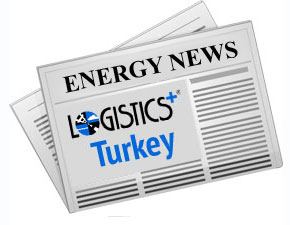
by Scott Frederick | Nov 3, 2015 | News
Energy News from around the World
 Today Logistics Plus Turkey sent its October issue of LP Turkey Energy News to customers and other interested parties throughout the region. Logistics Plus has extensive expertise providing transportation and logistics solutions to companies in the Energy & Fuel Industry.
Today Logistics Plus Turkey sent its October issue of LP Turkey Energy News to customers and other interested parties throughout the region. Logistics Plus has extensive expertise providing transportation and logistics solutions to companies in the Energy & Fuel Industry.
The new issue is pictured below. Click here to read the online version.


 As we announced last month, Jim Berlin/Logistics Plus and LP Linguistic Solutions were both nominated for Disrupt Erie Awards by Innovation Collaborative. Winners were announced Wednesday night at Presque Isle Downs & Casino. As reported by Erie Times-News earlier this morning, the following winners were named:
As we announced last month, Jim Berlin/Logistics Plus and LP Linguistic Solutions were both nominated for Disrupt Erie Awards by Innovation Collaborative. Winners were announced Wednesday night at Presque Isle Downs & Casino. As reported by Erie Times-News earlier this morning, the following winners were named:





 As we celebrate our
As we celebrate our 



